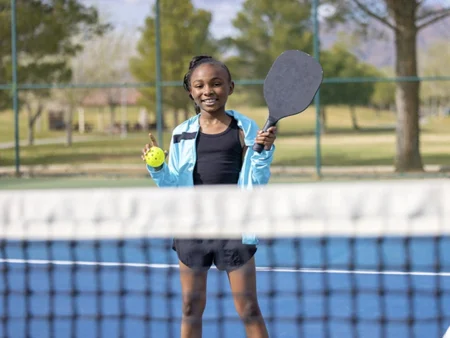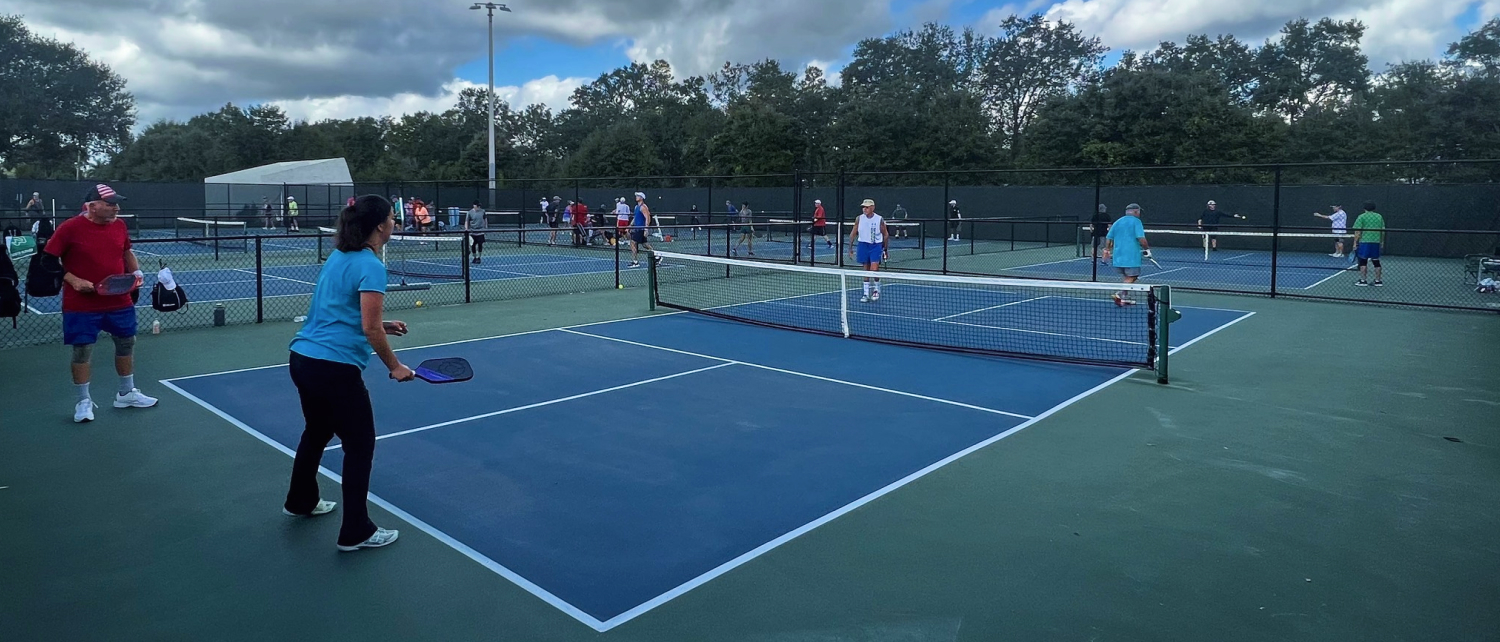Your cart is currently empty!

Pickleball is soaring in popularity throughout the United States, offering a blend of excitement and physical activity that appeals to all ages. Known for its engaging, sociable nature and its effectiveness as an exercise, this sport is a hit among both adults and children. Getting kids to participate in pickleball can spark a lifelong appreciation for active living and acquaint them with the thrills of this rapidly expanding sport. Explore the top five methods to inspire the younger generation to join in on the pickleball craze.
1. Make It Fun
Igniting a passion for sports in children begins with fun at its core. Pickleball captivates with its inherent enjoyment, and adding inventive twists can further this allure. Playful variations to the rules, engaging mini-competitions, and vivid gear can elevate the experience. Consider games like ‘Sneaky Chipmunk’ where kids can stealthily move and score points, or ‘Dinky, Dinky, Do!’ to hone precision through entertaining challenges. Aiming to prolong rallies or inventing whimsical shots adds layers of enjoyment, fostering creativity alongside skill development.
It’s not just about forehands and backhands; it’s about fostering an atmosphere where joy amplifies learning and laughter echoes with every serve and volley. Emphasize the camaraderie and the shared excitement of mastering new skills together. By allowing children the freedom to express themselves through the sport, they build confidence both on and off the court. With every giggle and cheer, pickleball becomes more than a game—it becomes a source of cherished moments and lifelong skills, setting the stage for a healthy, active lifestyle.
2. Involve Their Friends
In the spirit of fun and camaraderie, bringing children together for a day of pickleball can be a memorable way to introduce them to the sport. By hosting a pickleball event at a local community center or setting up a play area in your backyard, you create an inviting atmosphere where the focus is on enjoyment rather than competition. This social setting not only diminishes the intimidation that sometimes accompanies new ventures but also fosters a sense of belonging among the kids.
With laughter as the day’s soundtrack, children can learn the basics of pickleball through a series of interactive, cooperative games that encourage teamwork and friendly interaction. Mini-tournaments with playful rewards or team challenges enhance their engagement, making the experience more than just the sport—it’s about making connections, building friendships, and creating joyous childhood memories.
Moreover, these pickleball gatherings can be enriched with post-game activities such as picnics or award ceremonies for participation, ensuring that every child feels acknowledged and eager to return. Regular playdates, woven into their routine, provide consistent physical activity and the thrill of incremental learning and improvement. As these young enthusiasts share their pickleball stories, they become advocates for the sport, extending the invitation to more peers and perpetuating the cycle of communal play and lifelong interest in staying active.
3. Emphasize the Health Benefits
Children might not always be focused on the long-term benefits of physical activity, but introducing them to the joys of pickleball can plant the seeds for a lifetime of healthy living. This sport is an excellent way to boost their coordination, making each serve, volley, and sprint a step toward improved agility and faster reflexes. The dynamic movements involved in the game enhance balance and stimulate various muscle groups, which are crucial for a growing body.
But pickleball offers more than just physical perks; it is equally beneficial for mental health. The game’s pace requires quick thinking, which sharpens the mind, and the social aspect promotes emotional well-being by connecting children with their peers in a spirited environment. As they learn to navigate both wins and losses, they gain valuable life skills like resilience and sportsmanship. The laughter and excitement that pickleball generates help to alleviate stress, replacing it with a sense of accomplishment and joy.
Moreover, regular engagement in pickleball can lead to a deeper appreciation for an active lifestyle, ingraining the importance of exercise in a fun and natural way. As children look forward to their pickleball sessions, they’re not only having a great time but are also unknowingly laying the groundwork for robust physical and mental health.
4. Provide the Right Equipment
When introducing children to pickleball, ensuring they have the right equipment tailored to their needs is paramount. A lightweight paddle that fits comfortably in their hands can make a significant difference in their ability to play and enjoy the game. Smaller nets can bring the game to their level, literally and figuratively, making the sport more approachable and fun. For this, I&G Pickleball’s online store offers a variety of paddles perfect for young enthusiasts starting their journey in the sport.
Softer and lighter balls are also advisable, as they are easier for young players to hit and manage, reducing frustration and increasing their control over the game. This adaptability can quickly turn initial attempts into successful strikes, enhancing enjoyment and boosting confidence.
Proper footwear is equally crucial. Pickleball courts can be slick, and the right shoes can help prevent slips and falls, keeping the focus on the fun and learning aspects of the game. Encourage parents and guardians to invest in quality gear. With the right paddle in hand and the proper shoes on their feet, children are well-equipped to step onto the court with confidence and excitement for the game of pickleball.
5. Offer Encouragement and Support
Kids flourish when their efforts are recognized and their achievements, no matter how minor, are celebrated. It’s crucial to foster an environment where positive reinforcement and constructive feedback are the norms rather than focusing on criticism. By doing so, children learn that making mistakes is a natural part of learning and growing in any sport, including pickleball. Encouragement should not only highlight their victories but also acknowledge their courage to try new things and persevere through challenges.
Understanding that each misstep is a stepping stone to mastery can imbue children with the resilience to continue practicing and improving. This supportive approach builds their confidence and cultivates a deeper, more meaningful interest in the activity. Moreover, when kids feel backed by their parents, coaches, and peers, the pressure of perfection fades away, leaving room for enjoyment and the pure love of the game.
Parents and coaches play a pivotal role in this journey. They should aim to be the cheerleaders on the sidelines, the wise guides during practice, and the empathetic listeners after the game. Emphasizing effort over outcome helps children to internalize the value of hard work and the joy of participation, which are invaluable lessons that extend far beyond the pickleball court.
Introducing children to pickleball can lead to a lifelong appreciation for the sport and an active lifestyle. It’s a chance to learn new skills, make friends, and have fun. By making the game enjoyable, social, supportive, and tailored to their needs, you’re setting them up for a positive experience. Pickleball has the potential to be more than just a pastime for kids—it can be a stepping stone to building a healthy, active, and sociable future.
Picture Credit: IStock
by



